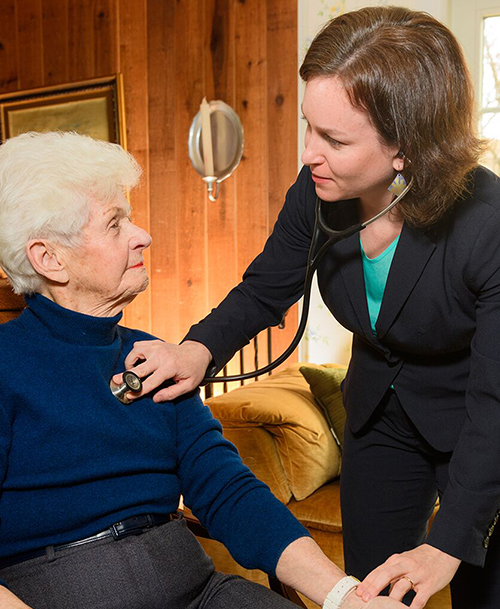Healthcare policymakers continue to support the move from expensive hospitals to outpatient, ambulatory, and home health settings in ways that will change where and how medical laboratories collect lab specimens
Clinical laboratories have adapted to many changes in the past decade and the increased demand for home healthcare is one of them. Thus, predictions from the US federal Government Accountability Office (GAO) that the number of home care jobs in the US will grow by 40% in the next 10 years will be of interest to medical laboratory managers.
Though “home care” and “home healthcare” differ in their cost and coverages, the GAO clearly expects the trend for treating people outside of expensive hospitals to continue and likely accelerate, requiring the nation’s medical laboratories to find new ways to provide services to the physicians they support, while also creating new systems for collecting laboratory specimens from patients being treated in their homes.
The federal agency attributes the growth in home care to demand from older adults and people with disabilities, the GAO said in its recently released report, titled, “Fair Labor Standards Act Observations on the Effects of the Home Care Rule.” Other experts concur. This is also significant for clinical laboratories because Medicare patients typically use more clinical lab testing services than younger people enrolled in commercial health plans.
“We believe [the GAO’s report] serves as a positive for home health and a negative for hospitals and other brick-and mortar care,” Laffer Healthcare Intelligence (Laffer) wrote in an e-mail to Dark Daily. “While COVID-19 has disrupted demand in some ways, growth in this industry (home care) is expected to grow substantially over time.”
How Home Care Differs from Home Healthcare
Home care differs from home healthcare in significant ways. In its report, the GAO defined home care as “non-medical” help by personal care and home health aides with “activities of daily living such as dressing, grooming, eating, or bathing.”
By contrast, according to Medicare, “In general, the goal of home healthcare is to provide treatment for an illness or injury … Home health care may also help you maintain your current condition or level of function, or to slow decline.”
While Medicare covers much of home healthcare, consumers usually pay out-of-pocket for home care, although some Medicaid programs may cover home care services for those eligible to receive them “as an alternative to institutional care,” the GAO report noted.
The annual median cost of home care is $53,000, while the average cost of a semi-private room in a nursing home facility is $90,000/year, according to a Genworth cost-of-care study on long-term care the GAO-cited in its report.
More than three million people work in home care, “one of the nation’s fastest growing industries,” the GAO report noted, citing 2018 data.

Growth in Home Care Mirrors Growth in Home Healthcare
“If home care is booming, so, too, will home healthcare—a setting that has much lower costs for services than acute care hospitals,” said Robert Michel, Editor-in-Chief of Dark Daily and its sister publication The Dark Report. “And one issue for clinical labs is that they will need a way to cost effectively collect specimens from patients who are being provided healthcare and personal care services in their homes.”
Dark Daily covered this growing trend in home healthcare and its effect on clinical laboratories several times this year. In “In-Home Healthcare Companies Bring High-Acuity Care, Including Clinical Laboratory Testing, to Patients at their Homes and Workplaces,” we reported on DispatchHealth of Denver, Colo., which recently brought its “ER-at-Home” in-home healthcare model to cities in Texas, Massachusetts, and Washington State.
In “Medicare Proposes Payment Changes to Increase At-Home Dialysis Services for End-Stage Renal Disease Patients in a Trend That Shifts Where These Patients Access Clinical Laboratory Tests,” we reported on how a new CMS proposed rule (CMS-1732-P) would accelerate CMS’ effort to direct patient care to lower-cost settings while improving access to care. And how the rule is further evidence that the shift from “volume to value” in healthcare may impact clinical laboratories and pathology groups in unexpected ways.
And in “Amazon Care Pilot Program Offers Virtual Primary Care to Seattle Employees; Features Both Telehealth and In-home Care Services That Include Clinical Laboratory Testing,” we covered how Amazon (NASDAQ:AMZN) was piloting Amazon Care—a virtual medical clinic and home care services program—as a benefit for its 53,000 Seattle-area employees and their families, and possibly planning a roll-out of healthcare services to its Prime members and other customers.
Home Care Growth Could be Positive
The GAO report predicts a huge increase in home care employment by 2030. With more patients opting to be treated at home for high-acuity and chronic healthcare conditions, such massive growth may be coming for home healthcare as well. For clinical laboratory managers, this is a call to step up outreach to the homebound by working with home care and home healthcare providers.
—Donna Marie Pocius
Related Information:
Fast Facts Highlights: Fair Labor Standards Act Observations on the Effects of the Home Care Rule
Ask the Experts: Summary of the GAO Report Observations on the Effects of the Home Care Rule




